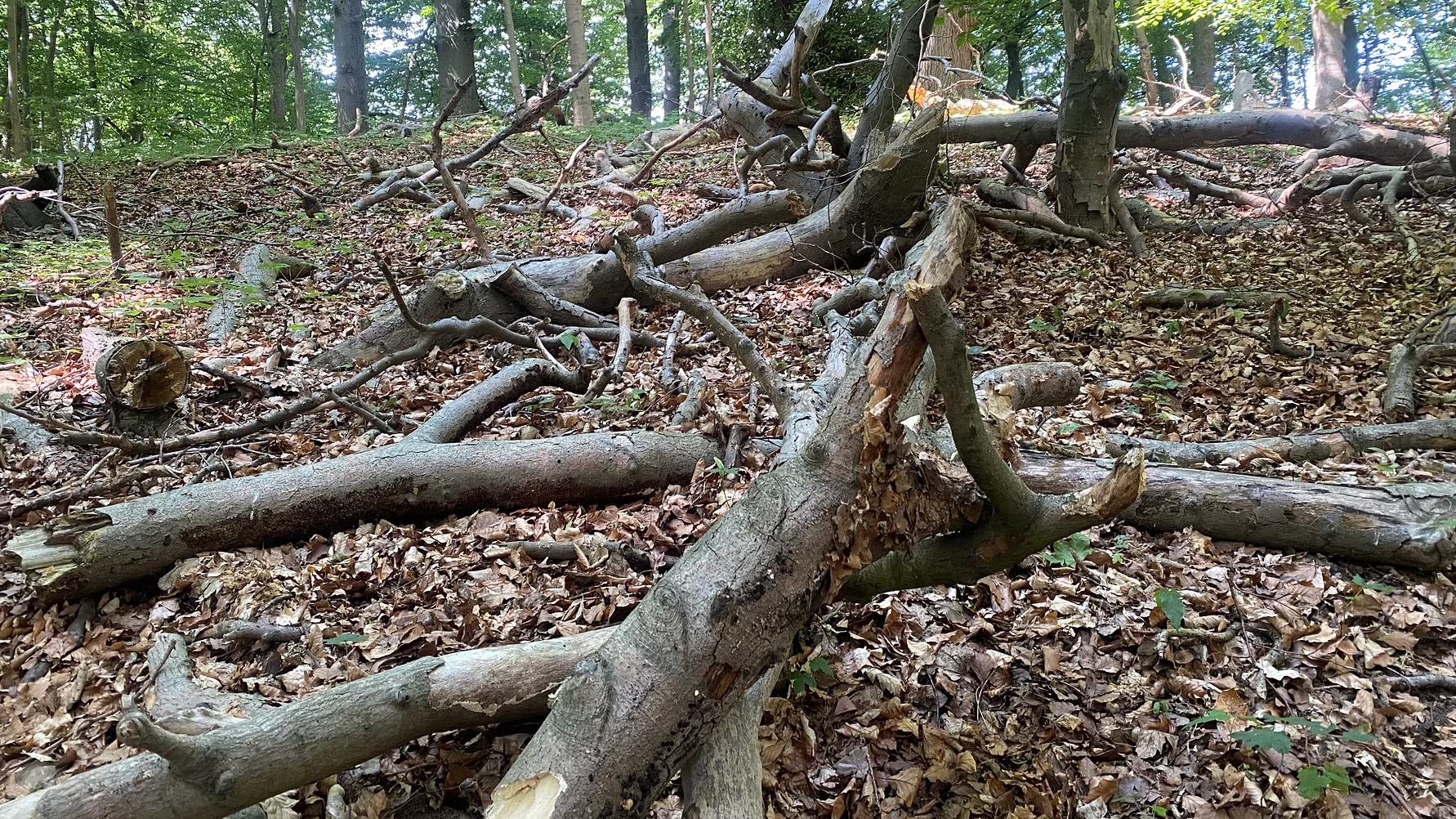
A Forest Is Not Just a Forest: A Biodiversity Law Must Protect Wild Forest Nature
The loss of species in Danish nature continues. If this development is to be reversed, we need much more forest in Denmark. But forest is not just forest. Monotonous production forests cannot stop the biodiversity crisis – we need wild forests! That is why Forests of the World has set out our recommendations for a new forest plan to halt the loss of biodiversity in Denmark.
“We need both types of forests in Denmark. There must be production forests to meet our need for timber products, but there must also be room for protected nature, where biodiversity is the top priority.”
Pil Chrisensen ~ Policy Advisor at Forests of the World
It is far from irrelevant which types of forests are prioritised in the landscape – because forest is not just forest. The production forests, which dominate in Denmark, do not provide the best conditions for biodiversity, and therefore cannot get us where we need to be when it comes to halting the loss of species. Wild forests, on the other hand, are teeming with life and rank much higher in terms of diversity of animal and plant species. They offer better conditions for many of our threatened species and serve as a stronger defence against climate change. That is why it is crucial that we begin to clearly distinguish between production forests and forest nature.
Biodiversity Demands a New Law
Both the EU and the UN’s Convention on Biological Diversity have adopted targets to ensure that 30 percent of land and sea, both in the EU and globally, is protected nature to halt the loss of species. “Denmark, of course, also has a responsibility to meet these targets. That is why we believe Denmark should aim for 30 percent truly protected nature, with representation of all habitat types. We also believe that at least half of this should consist of protected, wild forest nature,” emphasises Pil Christensen, Policy Advisor at Forests of the World.
Forests of the World further advocates for doubling Denmark’s forest area so it accounts for 30 percent of the country’s land area, with protected, wild forest nature making up half of the forested area. To achieve these ambitions, a forest plan and legislation are needed that take biodiversity, climate, groundwater protection, and nature exploration into account.
Currently, the Forest Act regulates the management of Danish forests. However, its roots trace back to the early 19th century, when Denmark had only three percent forest cover. At that time, King Christian VII introduced the Forestry Ordinance alongside the Forest Act to ensure that forests could continue to meet Denmark’s demand for timber products. The primary purpose of the Forest Act is, therefore, to secure production forests for timber and energy wood, protecting them from being converted into farmland or developed for other purposes. The law remains focused on production, and even in its most recent version, it gives only limited consideration to biodiversity.
“We believe the Forest Act should be repealed for strictly protected and other protected forest nature because it obstructs nature conservation,” says Pil Christensen. “Instead, we need a Biodiversity Act with equally strong requirements for land allocation to wild forest nature as the Forest Act has for production forests, along with permanent legal protection.”
She explains: “By removing protected and strictly protected nature from the Forest Act and including it in a new Biodiversity Act, we can ensure that biodiversity becomes the top priority. This will allow us to protect our threatened species that depend on untouched forests, while also giving Danes better opportunities to experience wild nature in Denmark.”
The government has set an ambition to expand Denmark’s forest area by nearly 40 percent (250,000 hectares) through afforestation.To achieve this goal, Forests of the World proposes that half of the 250,000 hectares be allocated to forest nature or “afforestation with biodiversity purposes.” This could be implemented through the Climate Forest Fund or the Danish Nature Fund. Pil Christensen explains: “If we create forests for biodiversity purposes, as recommended in the Biodiversity Council’s 2023 Annual Report, we can achieve far greater benefits for biodiversity, outdoor recreation, and tourism, while also building at least twice as large a carbon stock in the long term.”
Production forests are characterised by their highly uniform structure, where trees are often planted in straight rows and consist of only one or a few tree species, all of the same age. These trees often include introduced and invasive species, which support little to no native biodiversity. Wild forest nature, on the other hand, is a habitat and sanctuary for a rich diversity of animals, plants, and fungi. Here, beech, oak, willow, poplar, and elm mingle with flowering shrubs, fallen and decaying trunks, and open clearings. It is in these forests that biodiversity is allowed to thrive, and the natural functions of the ecosystem create better conditions for carbon storage, clean groundwater, greater resilience to storms, and the prevention of downstream flooding.
“We need both types of forests in Denmark. There must be production forests to meet our demand for timber products, but there must also be room for protected nature, where biodiversity is the top priority,” says Pil Christensen.
Jonas Schmidt Hansen
Who is Forests of the World?
We work to preserve the world’s forests, both in Denmark and the world’s tropical forests.Our focus areas include sustainability, Indigenous Peoples and local engagement.
